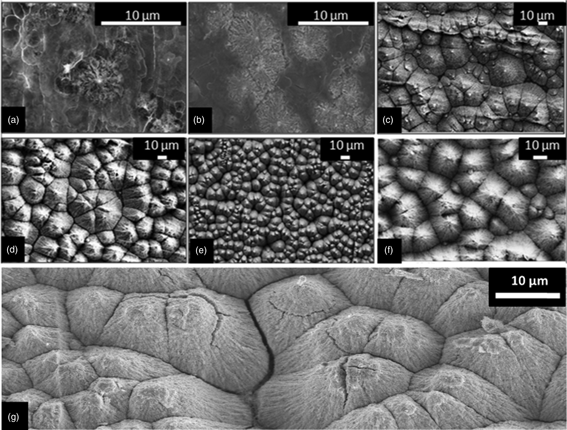Crossref Citations
This article has been cited by the following publications. This list is generated based on data provided by
Crossref.
El-Shazly, T.S.
Hassan, Walid M.I.
Abdel Rahim, Sayed T.
and
Allam, Nageh K.
2015.
Unravelling the interplay of dopant concentration and band structure engineering of monoclinic niobium pentoxide: A model photoanode for water splitting.
International Journal of Hydrogen Energy,
Vol. 40,
Issue. 40,
p.
13867.
Shaheen, Basamat S.
Hafez, Ahmed M.
Murali, Banavoth
Kirmani, Ahmad R.
Amassian, Aram
Mohammed, Omar F.
and
Allam, Nageh K.
2016.
10-fold enhancement in light-driven water splitting using niobium oxynitride microcone array films.
Solar Energy Materials and Solar Cells,
Vol. 151,
Issue. ,
p.
149.
El-Shazly, Tamer S.
Hassan, Walid M. I.
Rehim, Sayed S. Abdel
and
Allam, Nageh K.
2016.
DFT insights into the electronic and optical properties of fluorine-doped monoclinic niobium pentoxide (B-Nb2O5:F).
Applied Physics A,
Vol. 122,
Issue. 9,
Liu, Xiaolin
Zheng, Ruiming
Yuan, Renlong
Peng, Lin
Liu, Yongsheng
and
Lin, Jia
2017.
Released Defective Nb2O5with Optimized Solar Photocatalytic Activity.
ECS Journal of Solid State Science and Technology,
Vol. 6,
Issue. 9,
p.
P665.
Kollender, Jan Philipp
Mardare, Cezarina Cela
Mardare, Andrei Ionut
and
Hassel, Achim Walter
2018.
Downstream analytics quantification of ion release during high-voltage anodisation of niobium.
Journal of Solid State Electrochemistry,
Vol. 22,
Issue. 8,
p.
2457.
Quintero, D.
Gómez, M.A.
Araujo, W.S.
Echeverría, F.
and
Calderón, J.A.
2019.
Influence of the electrical parameters of the anodizing PEO process on wear and corrosion resistance of niobium.
Surface and Coatings Technology,
Vol. 380,
Issue. ,
p.
125067.
Saleh, Aya A.
Farag, Mahmoud
and
Allam, Nageh K.
2019.
Correlation between microstructural defects and photoelectrochemical performance of 1D Ti–Nb composite oxide photoanodes for solar water splitting.
International Journal of Hydrogen Energy,
Vol. 44,
Issue. 45,
p.
24418.
Salem, Kholoud E.
Mokhtar, Abdelrahman M.
Abdelhafiz, Ali
and
Allam, Nageh K.
2020.
Niobium–Zirconium Oxynitride Nanotube Arrays for Photoelectrochemical Water Splitting.
ACS Applied Nano Materials,
Vol. 3,
Issue. 6,
p.
6078.
Ryshchenko, Igor
Lyashok, Larisa
Vasilchenko, Alexey
Ruban, Artem
and
Skatkov, Leonid
2021.
Electrochemical Synthesis of Crystalline Niobium Oxide.
Materials Science Forum,
Vol. 1038,
Issue. ,
p.
51.
